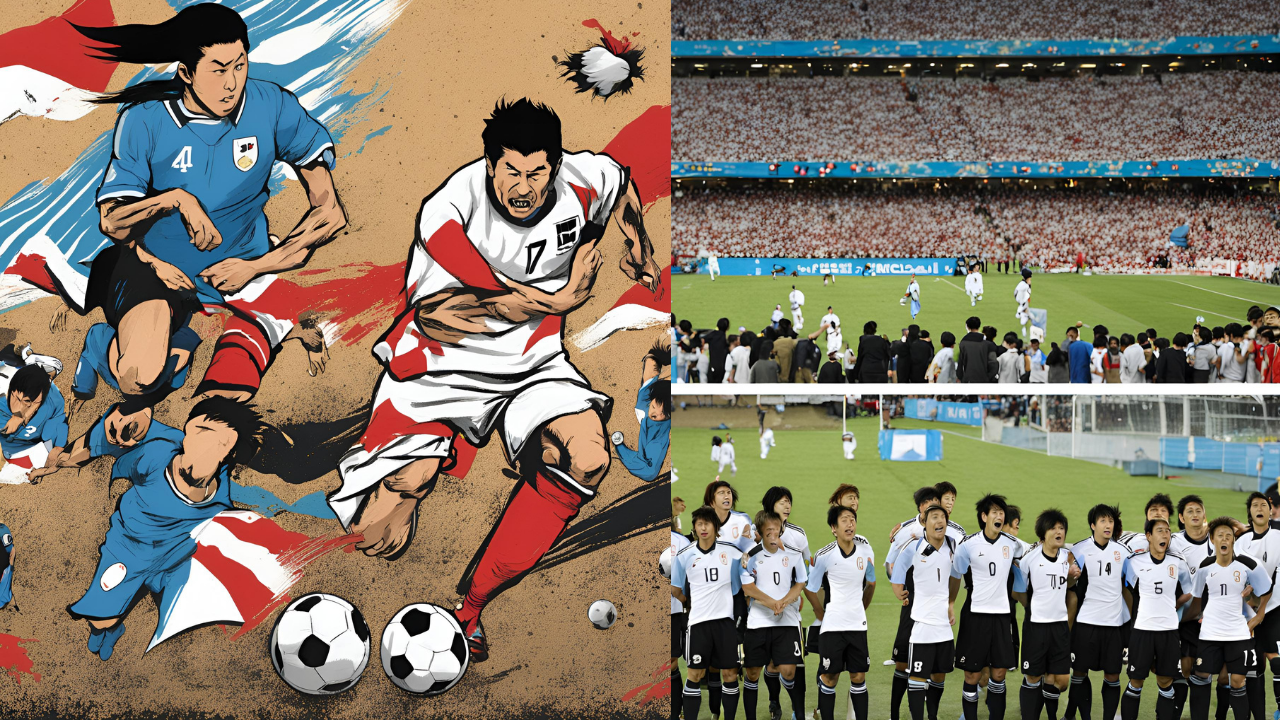Japan and Uruguay Face Off in a Thrilling Football Encounter
Differing Styles and Unyielding Spirit Define the Match Between the Blue Samurai and La Celeste

Football, frequently called” the beautiful game,” unites different societies and styles under one global passion. A recent match that charmed suckers around the world was the showdown between J and u. This clash not only stressed the differing styles of the two brigades but also showcased the adaptability, skill, and strategic depth that both nations bring to the field.
A Tale of Two Footballing doctrines :

Japan, known as the Blue Samurai, has steadily erected a character in transnational football for their chastened approach, specialized finesse, and inexhaustible work heritage. Their playing style emphasizes quick end, dexterity, and cooperation. With a strong emphasis on developing youthful gift and a scrupulous focus on strategy and conformation, Japan has surfaced as a redoubtable force in Asian and world football.
On the other hand, Uruguay, or La Celeste, is steeped in football history, boasting a proud heritage that includes two World Cup palms and multitudinous Copa América titles. Uruguay’s style of play is frequently characterized by its physicality, politic discipline, and a grim attacking spirit. They’re known for their rugged defense and their capability to acclimatize to different situations on the pitch, frequently turning games around with moments of sheer individual brilliance.
The Match A Battle of Strategy and fortitude :
As the game commenced, it was clear that both brigades were eager to assert their dominance. Japan started with a high- tempo end game, trying to maintain possession and make attacks from the reverse. Their midfielders displayed excellent control and movement, trying to exploit gaps in the Uruguayan defense. Japan’s captain orchestrated the play with perfection, showcasing the platoon’s hallmark specialized chops. Uruguay, still, was quick to respond with their trademark counter-attacks. exercising their experience and strength, they challenged Japan’s defense with direct runs and long balls.
Uruguay’s forwards, known for their aggressive play, tested the Japanese goalkeeper beforehand on with a series of important shots. It was a classic display of South American faculty combined with European politic mindfulness. The first half saw Japan controlling possession but floundering to break down Uruguay’s solid defense. La Celeste, on the other hand, looked dangerous on the break, frequently hanging with quick transitions from defense to attack. As the half progressed, the game came more physical, with both brigades committing politic fouls to disrupt each other’s meter.
-
A Game of Two Halves

The alternate half brought further intensity as both brigades acclimated their strategies. Japan began to press advanced up the field, trying to force crimes from the Uruguayan backline. This tactic nearly paid off when a lost pass allowed Japan’s forward to break through on thing, but the Uruguayan goalkeeper was over to the task, making a pivotal save. Uruguay responded by tensing their midfield and switching to a more protective conformation to fight Japan’s adding pressure.
They reckoned on their experience and politic wit to absorb the pressure and stay for the right moment to strike. In the 65th nanosecond, their tolerance was awarded. A nippy counter-attack saw Uruguay break down the left hand, and a impeccably ladened cross set up their striker, who finished with clinical perfection.
Despite going a thing down, Japan didn’t yield. The Blue Samurai showed their adaptability, continuing to press and produce chances. Their sweats were eventually awarded in the 80th nanosecond when a well- executed set piece redounded in a headed thing, leveling the score. The colosseum erupted as Japan’s suckers celebrated their platoon’s continuity and no way – say- die station.
-
A Show of Global Football Talent

The match ended in a hard- fought draw, reflecting the strengths and determination of both brigades. Japan’s capability to control the game with their specialized prowess and Uruguay’s adaptability and politic rigidity made for an immersing contest. This match was further than just a friendly; it was a demonstration of how football can bridge societies and styles, furnishing a platform for different doctrines to shine.
Conclusion: Assignments from a Thrilling Encounter
a game that showcased the evolving nature of transnational football. For Japan, it was a testament to their growing confidence on the world stage, proving they can contend with the stylish. For Uruguay, it was a memorial of their rich football heritage and their capability to acclimatize and thrive against different styles of play.
As both brigades look ahead to unborn competitions, this match will serve as a precious experience, pressing areas of strength and aspects demanding enhancement. For suckers, it was a memorial of why football is cherished worldwide — a game where skill, strategy, and spirit come together to produce indelible moments.
